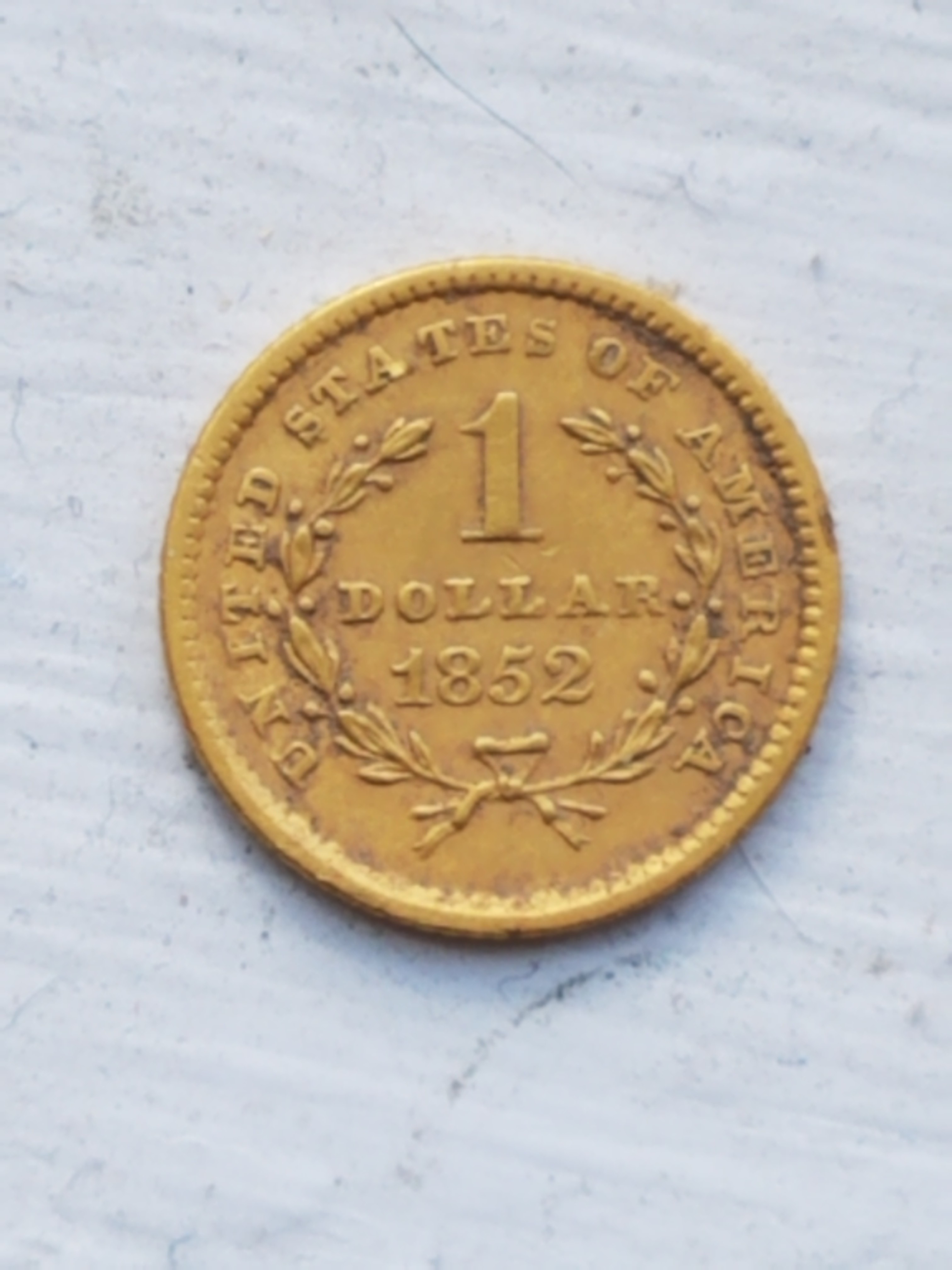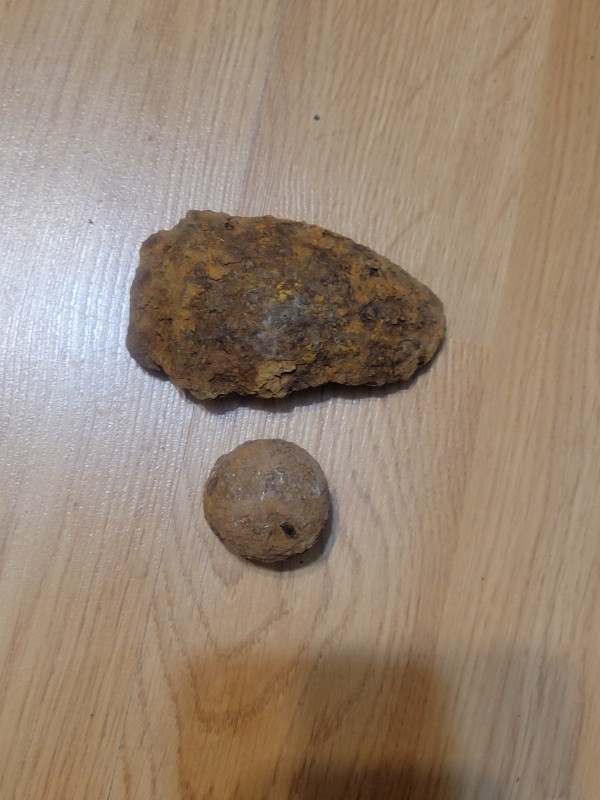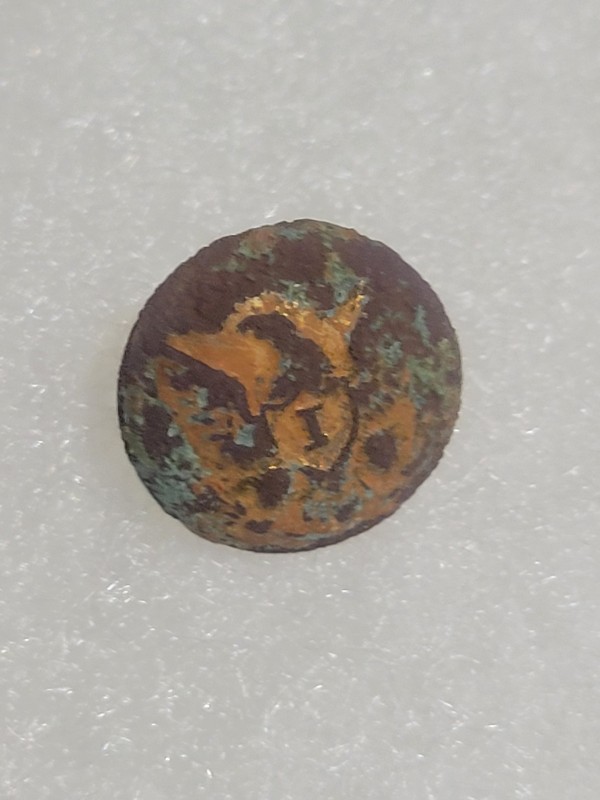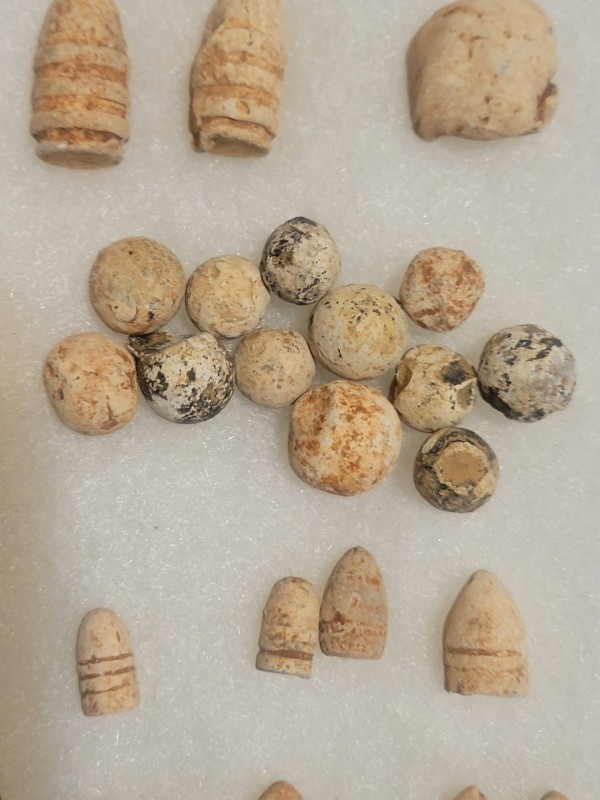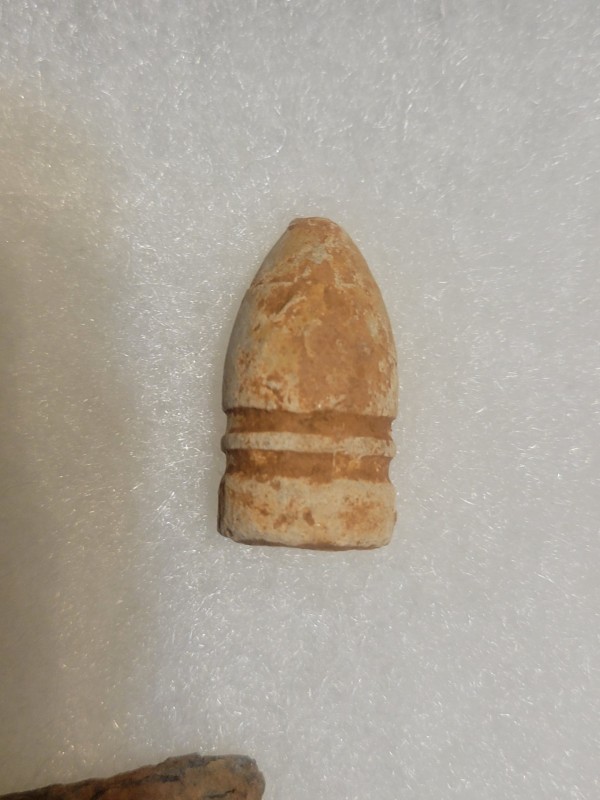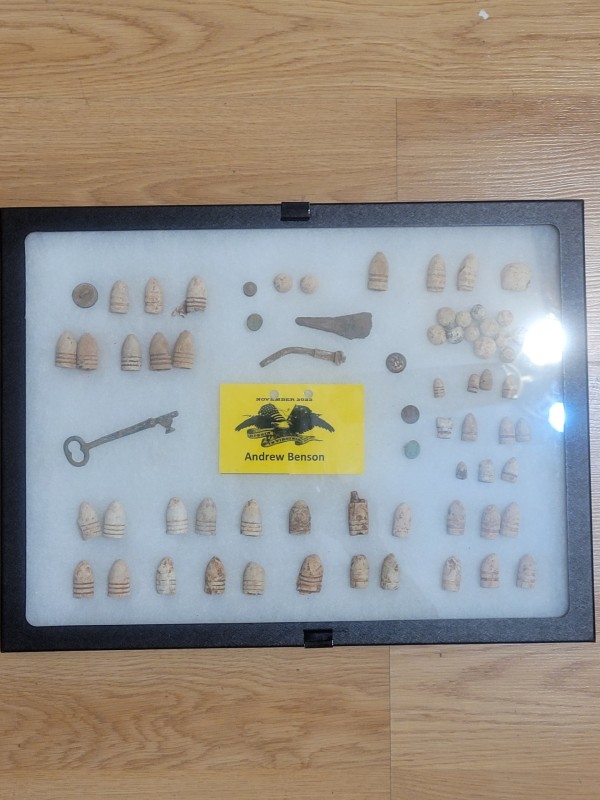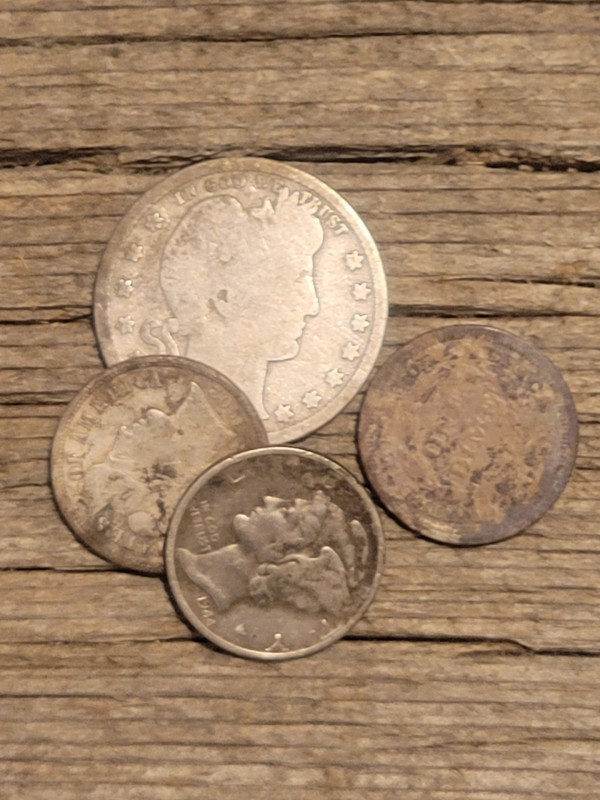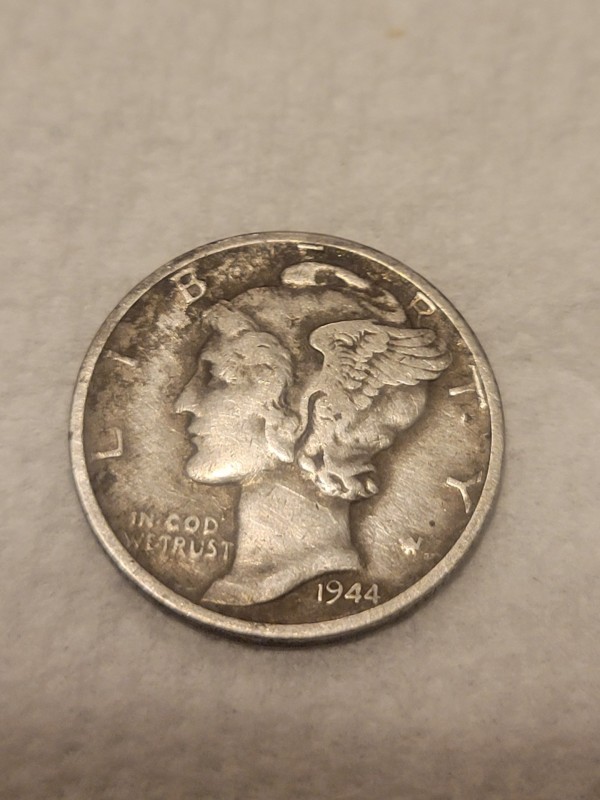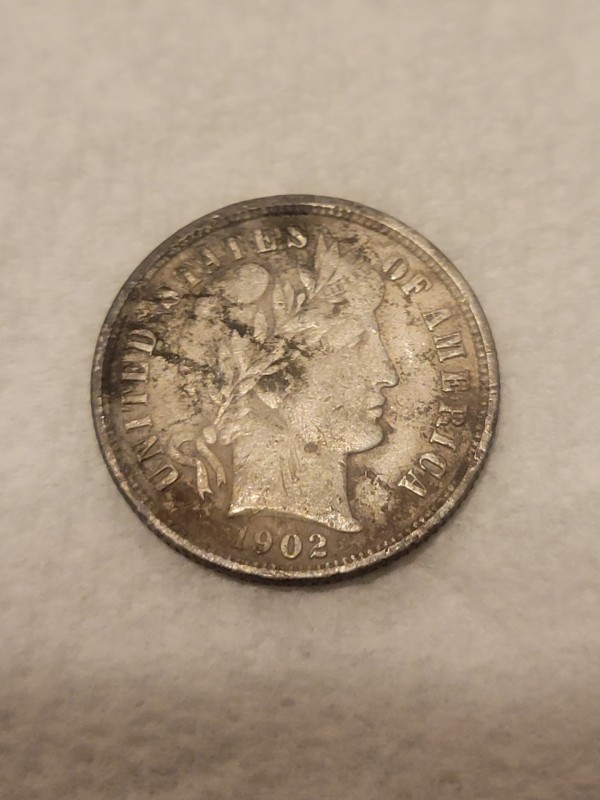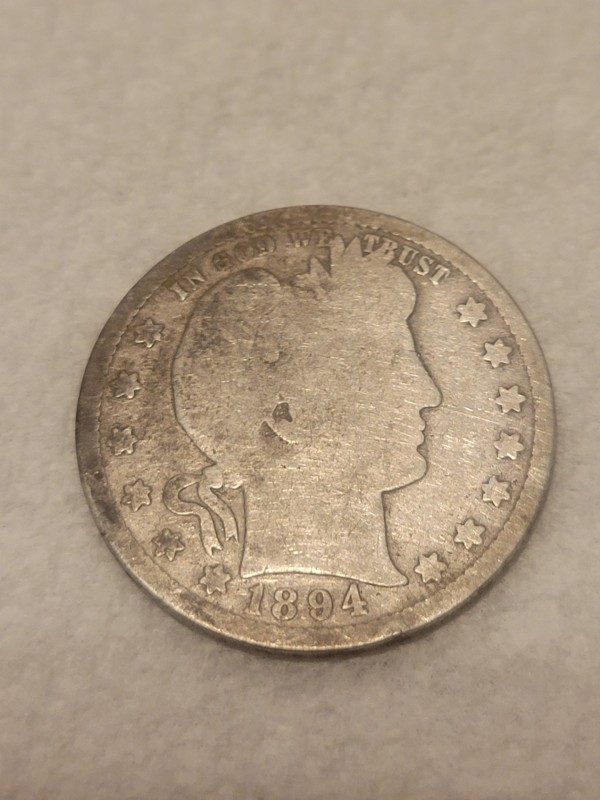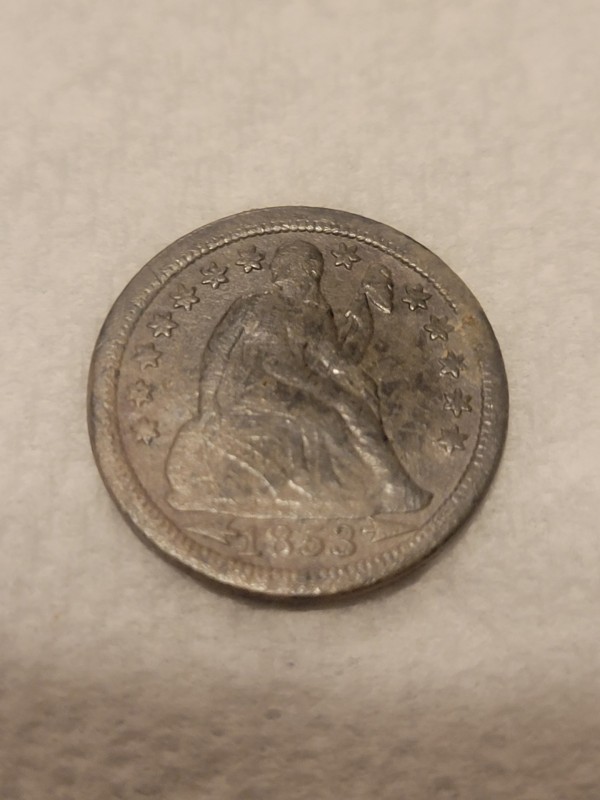-
Posts
999 -
Joined
-
Last visited
Content Type
Forums
Detector Prospector Home
Detector Database
Downloads
Everything posted by abenson
-
LOL yea I've even cursed a walking liberty half once at one of those older sites. I only used the D2 for about 2 hours the whole 6 days and that was in the trashy areas the GPX wouldn't work. Ground mineralization was aboutbthe same both places. 10% of the bullets were confederate. I think the trap is post civil war. The field have been plowed in the past. But some of the depth comes from winter huts being occupied by troops over the winter. A 2 foot deep hole was dug and then a log hut topped with a canvas tent made up their winter quarters. Thanks glad you liked the video. Sometimes I wonder if it's worth it. Takes about 6-8 hours to edit and produce each video. But I figure if nothing else I can go back later and watch them myself as a reminder of the good time I had.
-
Last week I went to Culpeper, VA to attend Diggin In Virginia 52 & 53. This is where 100,000 US troops spent the Winter or 1863-64 and the Battle of Brandy Station took place. This area is know for some of the worst dirt in the USA. Bury a nickel 5" deep and most VLF machines can't see it. On the other hand take a PI and you'll be digging targets the size of bullets 16-18" deep and larger items such as shell fragments and belt plates over 2 feet deep. To top it all off these farms have been pounded over the years so finds can be slim. That being said it's still fun for me to attend and catch up with the many friends I've made over the years and meet some new ones. Now on to the particulars of the GPX 6000 as a relic machine. I've said it before and I'll say it again, I will never go back the GPX 5000 for gold or relics. The 6000 IMO is that good. Water resistant, interchangeable rechargeable battery, wireless headphones, light weight and compact. Everything the GPX 5000 isn't. The only thing the 5000 has the 6000 doesn't is iron reject and I can honestly say I don't miss it. I started beach and relic hunting with the Whites TDI that also lacked iron reject, so I had to learn what iron sounded like on a PI and this knowledge has transferred over to the 6000. Not saying I didn't dig any iron, but I don't fell like I dug any more than anyone using a 5000. Not only that ther are plenty of iron targets I want to find like horseshoes, artillery shells and fragments. I was a little concerned that EMI might be an issue with all the other GPX's present at this hunt. Things can get crowded in good producing areas. However, I found the 6000 to handle the EMI very well, as long as I was at least 30 feet from another machine or not under power lines. EMI for the most part was rock solid with no waiver most of the time. Now obviously I was wearing headphones with all those people around so I can't say if that would be different or not without them. I used the 11" mono the entire time, ran the machine in difficult, sensitivity all the way down, threshold on. That's it! simple settings without having to worry about whether or not I had it setup right. Setup this way, the machine is plenty deep. In fact I had one of my buddies check a deep target I found with his 5000 wearing an 18" coil and he said he could barely hear it. On the 6000 it was a clear signal. Just think how deep you could go using normal timing with sensitivity all the way up. But there's a reason I run difficult timing and you can read my post here if you want to know why. So below is a video and pictures of my finds. I found a lot more than shown like fired bullets and case shot that I just won't display. Also found about 6 artillery frags and only one is shown. I didn't find anything spectacular this time, but did have a great time and dug plenty of targets. Top is an artillery frag and an iron ball used in canister shot, next picture shows what canister shot is. Round balls are case shot which is similar to canister shot. Eagle I cuff, Bullet is a confederate Gardner and finally the display I made.
-

Buttons, Buckle And Other Stuff
abenson replied to F350Platinum's topic in Metal Detecting For Coins & Relics
I know the tin backed ones are 1830-1850's I would assume yours is from the same time period. -

Buttons, Buckle And Other Stuff
abenson replied to F350Platinum's topic in Metal Detecting For Coins & Relics
Nice bunch of stuff. Love the navy button, is it tin backed or brass? -

Fur Trade & Gold Rush Sites In One Day!
abenson replied to Cal_Cobra's topic in Metal Detecting For Coins & Relics
Yea dug some relics, I'll try and make a post tomorrow or Sunday. That buckle looks like it's stamped brass, is that what it is or cast? Yea but probably a $100 or more behind LOL. -

Back To The Coal Mining Town
abenson replied to CPT_GhostLight's topic in Metal Detecting For Coins & Relics
Nice bunch of relics! Always love the assortment of stuff people find relic hunting, keeps thing interesting. -

Fur Trade & Gold Rush Sites In One Day!
abenson replied to Cal_Cobra's topic in Metal Detecting For Coins & Relics
Just getting around to reading this post as I was in Virginia all last week looking for Civil War Relics and it took me until today to get caught up on work. Nice bunch of finds guys! You really have the cream of the crop for sites to hunt. Tom what's the story on the star buckle? Is that a Texas buckle? Part of a cast buckle was found with a star and those are Texas soldiers. BTW Tom I picked up #17 this Summer -
Nice bunch of relics you found. Always nice to find an assortment of finds, keeps things interesting. Love the thimble!
-
It's a Christmas tree. Does that mean it will be available before Christmas? LOL
-
Nice job Steve. I'm glad Garrett had an open mind to your suggestions and then implemented them. Rare these days for a company to actually listen to it's customers. Looking forward to getting ahold of one in the Spring as the weather now is to the point that I won't be able to use one until then.
-

Buttons And Coins - A "reale" Blast
abenson replied to F350Platinum's topic in Metal Detecting For Coins & Relics
Nice bunch of finds. Congratulations on the cut silver!- 28 replies
-
- relic found
- coin found
-
(and 1 more)
Tagged with:
-
We'll have to make it a point to meet up next time Monte has an outing in NV. Looks like the next one might be in the Winnemucca area. Yea at this point in the game I would pass on a V3i. Like you said there are lighter units available. It could be interesting if Garrett would take it to the next level though, then I might consider one.
- 18 replies
-
- dfx vx3 v3i
- coin found
-
(and 1 more)
Tagged with:
-
Never did get acquainted with the White V3i, just seemed to complicated to setup correctly. Nice bunch of older coins, always a welcome site to see an IHP or Barber coin pop out of the dirt.
- 18 replies
-
- dfx vx3 v3i
- coin found
-
(and 1 more)
Tagged with:
-
I’ve been reading some forums and watching some video on the Silver Slayer program for the XP Deus 2. Using notch seems to be the ticket to make the D2 perform well on coins in iron and modern trash. I had experienced a similar phenomenon while hunting for gold nuggets a few months back where I notched out iron on a site that was littered with nails. This resulted in me finding a .40 gram nugget. So, I got to thinking how would using notch work while detecting extremely trashy ghost town sites? Well, I tried it out this past weekend and was pleasantly surprised with the results. Those of you that hunt ghost towns know that it can be very challenging to pull good targets from all the trash. Not only are there hundreds of nails, you also have to deal with tin cans, bottle caps, stove parts, bolts, etc. To help deal with all the trash I developed a program for the D2 I call GHOST, for ghost town hunting. It uses the same principles as the Silver Slayer program but at the same time is nothing like it. The GHOST program is set up to find tokens, nickels and IHP or higher coins. You can make adjustments to it to include Chinese cache coins and 3 cent silver if you like but my intent is to cherry pick the most common coins and tokens. I’m sure some of you will agree that you could spend hours in a small trashy area of a ghost town picking through the targets and analyzing every target with different programs to try and get everything possible. But not all of us have that kind of time so that’s where the GHOST program comes in. It’s meant to pull the best targets possible in the least amount of time. Here is the way I have the D2 setup for the GHOST program. Based off the FAST program. Sensitivity 90, Audio response 4, Silencer 2, Bottle Cap reject 2, PWM audio, Reactivity 3, Notch 0-10, Disc can be setup for anything up to 10 but don’t go above whatever you have notched, 5 tones-first break will be whatever you have your disc set at, second break up to 58 232 Hz, third break 58-62 (or a little higher if you like) 750 or so Hz, fourth break 62-80 550 Hz, fifth break 80-99 901 Hz. In my video the Hz may vary and really you can use whatever Hz you want. The point is to make nickels and IHP/tokens stand out. Now the nickel range you can bump up a bit to 64 or 65 but I find most Jeffersons come in at those higher numbers and I’m really only interested in the Buffalos and older nickels. Having the D2 setup like this really makes for a more enjoyable hunt experience in my opinion. Nails are totally illuminated. Bottle caps and flat tin can easily be ID’s through broken audio. Very little flat tin type targets give a good audio response unlike other setups I’ve used. Coins, tokens and other relics that fall in the target bins, give clean audio and visual responses. For those target s that fall in the bins you have at lower Hz settings, they can be analyzed individually to determine if you want to dig them. So now for the proof. I went to 4 different ghost towns over this last weekend. One is on private property which the owner has allowed hunting on for decades. I have personally been there 30 or 40 times over the last 30 years. I’ve used the Equinox, ORX, Deus, Simplex, Racer 2, Explorer, Fisher CZ 6a. eTrac, etc. over those 30 years and never brought more than one coin/token per trip home. Until now. Day 1 we didn’t start hunting until 2 pm. First good signal in the 90-93 range, right next to a fallen down wooden shack with lots of nails around, up pops a 1944-D dime. Not as old as I would have expected but silver non the less. Second good high tone signal in an area littered with flat tin and nails turns out to be a 1902 barber dime. Day 2 spent most of the morning exploring some other ghost towns in the area on 4 wheelers. Didn’t get the metal detectors out much because it’s BLM and you really should only be searching for minerals or newer relics. Sad because most of these towns have been used as party spots for decades, leaving beer cans and bottle caps littered everywhere. I did pick up a few newer pennies around some of the fire pits. About 3 pm we decided to go back to the private property and search until dark, giving me about 4 hours to find something. Got a number of high tones in the 83-88 range that all turned out to be items such as aluminum caps, a thimble, drawer pull, harmonica reed plates, etc. But then I got one signal in the 90-93 range and out pops the oldest coin of the trip an 1853 seated dime. Keep hunting along and pulled a few targets that were in the nickel range that all turned out to be brass odds and ends. Then 1 hour before we were ready to leave as I was working my way back to the truck I got a signal right next to a piece of flat tin 95-97 range. But after removing the piece of tin I was still getting 95-97 and it turned out to be an 1894-S Quarter. Now you can say that nobody ever swung over those targets before or a host of other things. But me personally I think the D2 has something special going on when notch is used. I did a video of the trip below. In the video I show all the audio and visual ID for the coins so you can get an idea of just how good notch works on the D2. Thanks everybody!
-

Condor's 2022 Australia Gold Adventure
abenson replied to Condor's topic in Detector Prospector Forum
Nice bunch of gold Steve. Some nice looking nuggets and sounds like you had a good time. -

Ahhh, Relics! Surprise Of The Year (so Far)
abenson replied to F350Platinum's topic in Metal Detecting For Coins & Relics
Nice find, too bad it's damaged. Even so I would be over the moon to find one of those buttons.

